Blogging for coaches means writing clear, problem-solving articles that prove you understand prospects’ struggles and can help them win. When you post valuable tips consistently, your blog turns into a 24/7 discovery-call engine that works while you sleep.
–
For the PMIC Method to pull clients, jump to this section.
For the niche selection matrix, go here.
For the content strategy, see here.
–
Why Every Coach Needs a Blog (And Why Most Fail)
Businesses that blog pull in 67% more monthly leads than those that don’t (Source: HubSpot). Yet most coaches I meet are staring at empty WordPress dashboards, paralyzed by the blinking cursor.
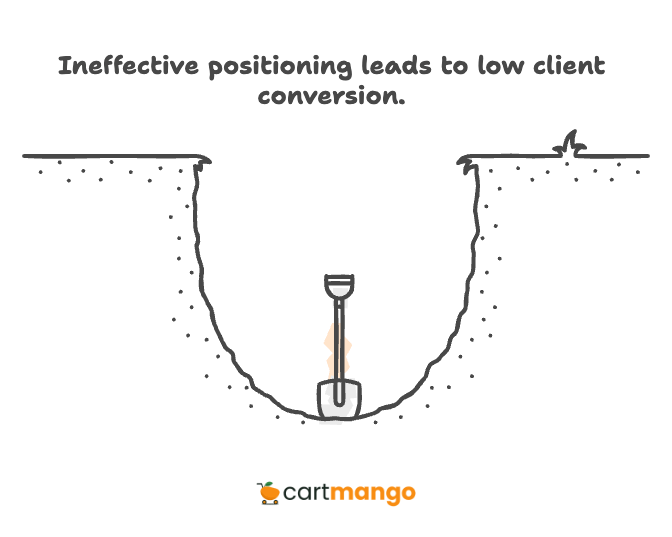
The problem isn’t lack of expertise. You’ve helped dozens of clients transform their lives. The problem is positioning your knowledge in a way that attracts the right people and converts them into discovery calls.
I’m walking you through a systematic approach that turns 1 weekly post into steady client bookings. Of course this isn’t about viral TikTok dances or Instagram aesthetics. This is about building a content engine that works while you sleep.
Your Coaching Niche
Not every niche pays equally. Before you write a single word, you need clarity on where you fit. Enter the Niche Selection Matrix:
Niche | Best-Fit Personality & Strengths | Competition Level | Annual Income Range (USD) |
|---|---|---|---|
Life Coaching | Empathetic motivator, active listener | High | $45,000 – $90,000 |
Business Coaching | Strategic thinker, results-driven | Very High | $80,000 – $220,000 |
Health & Wellness | Science-minded, holistic approach | Medium | $53,000 – $82,000 |
Career Coaching | Supportive analyst, assessment skills | High | $48,000 – $66,000 |
Relationship Coaching | Calm mediator, communication expert | Medium | $50,000 – $125,000 |
Financial Coaching | Detail-oriented, money-savvy | Medium | $29,500 – $70,500 |
Mindfulness & Meditation | Patient teacher, spiritual guide | Low-Medium | $35,000 – $70,000 |
Executive Coaching | Decisive leader, C-suite experience | Very High | $95,000 – $220,000 |
Parenting Coaching | Nurturing educator, child development | Low-Medium | $35,000 – $65,000 |
Sales Coaching | Persuasive closer, quota experience | High | $43,000 – $101,000 |
Confidence Coaching | Encouraging cheerleader, mindset work | Medium | $40,000 – $85,000 |
Productivity Coaching | Systems thinker, efficiency expert | Medium | $50,000 – $90,000 |
The income ranges come from ICF’s 2024 Global Coaching Study. These numbers reflect the 10th to 90th percentile of full-time practitioners, not the top 1% success stories you see on social media.
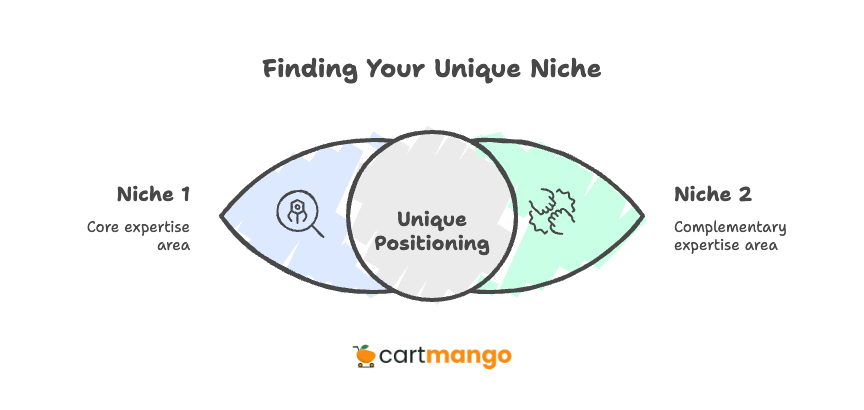
Pick one lane.
If your chosen niche feels overcrowded, blend two complementary areas. For example, “Productivity Coaching for Executives” or “Confidence Coaching for Sales Professionals” creates a unique positioning with less competition. I’ve previously written about niching down if you want to explore deeper.
The mistake I see repeatedly: coaches trying to help “anyone who wants to improve their life.” That’s not a niche, that’s a prayer. Narrow your focus to widen your impact.
Content Strategy: The 70/20/10 Framework
Random posting kills blogs. Planning saves them. Here’s what I suggest: organize content using a 3-layer approach that keeps readers engaged while building search authority.
The Content Mix
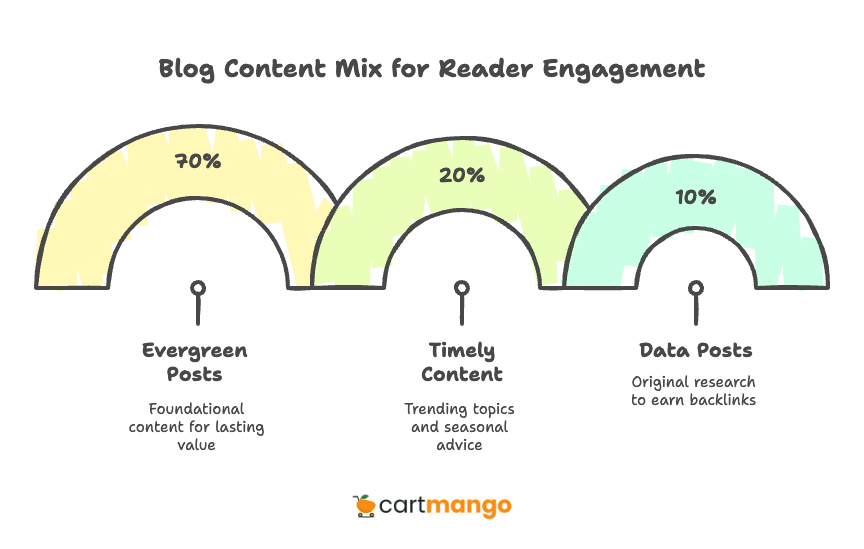
- 70% Evergreen Posts: How-to guides, frameworks, and pain-point solutions that stay relevant for years
- 20% Timely Content: Reactions to industry trends, seasonal advice, current events in your niche
- 10% Data Posts: Original research, surveys, or case studies that earn backlinks
This balance ensures steady traffic from search engines while keeping your content fresh and shareable.
Topic Clustering Strategy
Instead of random topics, create clusters around pillar themes.
Here’s how it works for a Sales Coaching blog:
Pillar Topic: “The Complete Consultative Selling Framework”
Supporting Posts:
- “5 Objection-Handling Phrases That Close More Deals”
- “Discovery Call Script Template (With Examples)”
- “The Sales KPI Dashboard Every Coach Needs”
- “How to Follow Up Without Being Pushy”
Each supporting post links back to the pillar, creating a web of related content that Google loves.
Content Planning Checklist
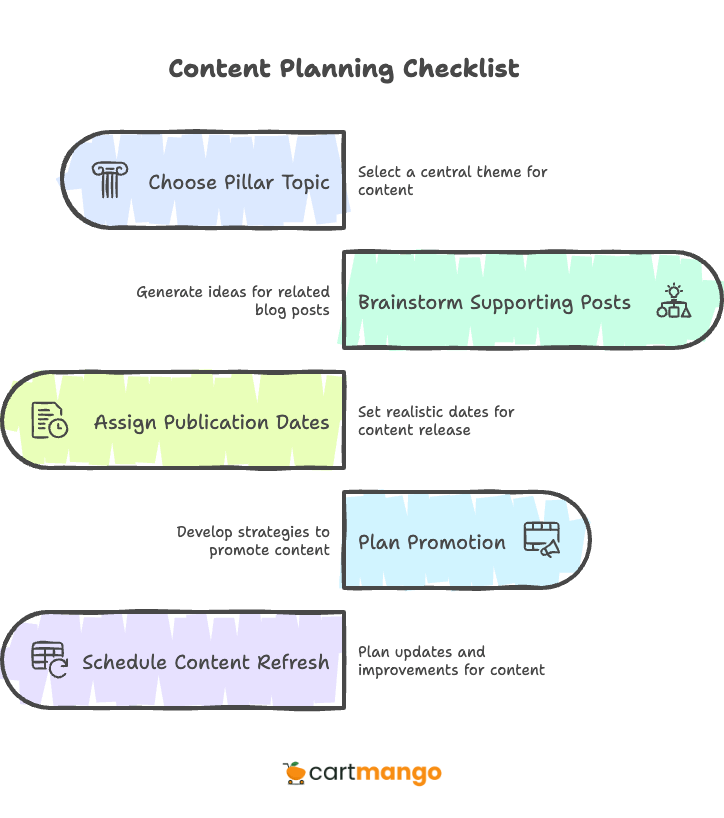
Step | Action Required | Example |
|---|---|---|
1 | Choose pillar topic aligned with your niche | “Consultative Selling Framework” |
2 | Brainstorm 4-5 supporting blog posts | Objection scripts, follow-up templates, KPI tracking |
3 | Assign realistic publication dates | Pillar: Jan 8; Supporting: Jan 15, 22, 29, Feb 5 |
4 | Plan promotion across channels | Email newsletter, LinkedIn post, Instagram carousel |
5 | Schedule quarterly content refresh | April 30: Update stats, add new internal links |
Most coaches stop at step 3. The promotion and refresh phases separate successful blogs from abandoned ones.
Editorial Calendar Mapping
Sync your content with the natural rhythms of coaching business:
- Q1 (Jan-Mar): New Year transformation themes, goal-setting frameworks
- Q2 (Apr-Jun): Mid-year momentum, overcoming plateaus
- Q3 (Jul-Sep): Preparation for fall launches, scaling strategies
- Q4 (Oct-Dec): Year-end reflection, planning for next year
This seasonal approach ensures your content feels timely and relevant to your audience’s current needs.
SEO Essentials: Rank Without the Technical Overwhelm
Search engine optimization sounds intimidating, but coaches only need to master the basics. Google’s algorithm updates come and go, but these fundamentals remain constant.
Keyword Research
Start with pain-point phrases your clients use in discovery calls. If three prospects mention “struggling to close sales calls,” that’s your keyword goldmine.
Free Research Tools:
- Google Keyword Planner
- Ubersuggest
- Answer The Public: Shows question-based searches
- Google’s “People Also Ask” section
- YouTube search suggestions
Pro tip: Long-tail keywords (3+ words) are easier to rank for than broad terms. “Sales coaching” has massive competition. “Sales coaching for introverts” is much more winnable.
On-Page SEO
Print this list and check it for every post:
- Target keyword appears in H1 heading
- Keyword used naturally in first 100 words
- URL slug contains main keyword
- Meta description written with benefit statement
- Hero image includes descriptive alt text
- At least 2 internal links (one to a service page)
- 2+ outbound links to authoritative sources
- Post length exceeds 1,500 words
- Proper heading structure (H1, H2, H3)
- Mobile-friendly formatting with short paragraphs
The Annual Refresh Strategy
Here’s what most coaches miss: content decay. Posts older than 12 months start losing rankings as information becomes outdated.
Quarterly Refresh Process:
- Review posts from 12+ months ago
- Update statistics with current data
- Add new internal links to recent posts
- Check that external links still work
- Republish with updated date
This simple maintenance keeps your best content ranking consistently.
The PMIC Method: Magnetic Writing to Turn Readers Into Clients
Good writing isn’t about perfect grammar or fancy vocabulary. It’s about connecting with someone’s pain and showing them a path forward.
Every compelling coaching post follows this four-beat structure:
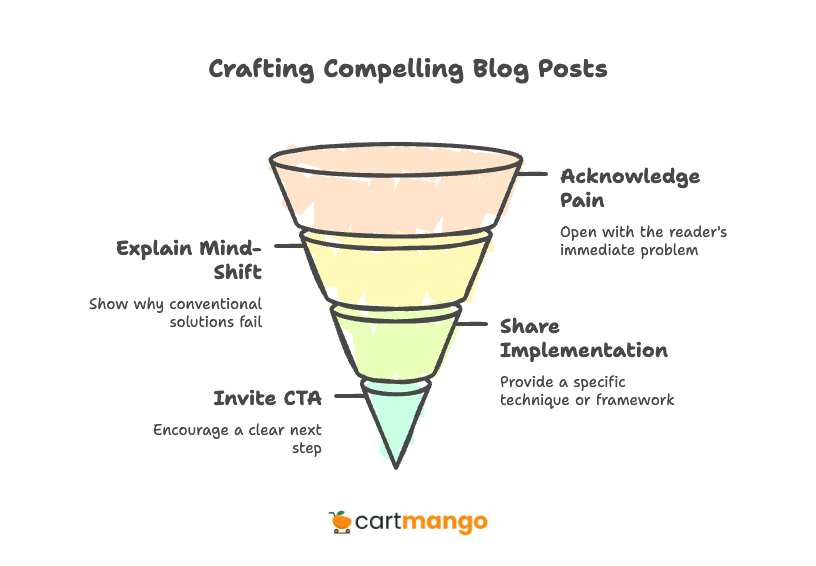
- (P)ain: Open with a problem your reader faces right now
- (M)ind-shift: Explain why conventional solutions fail
- (I)mplementation: Share a specific technique or framework
- (C)TA: Invite one clear next step
Example Opening (Pain):
“You’re 20 minutes into a discovery call when you feel it happening again. The prospect is interested, engaged, asking good questions. Then you mention your pricing and watch their enthusiasm deflate like a punctured balloon.”
Mind-shift:
“Most sales coaches teach you to ‘handle objections’ by countering every concern. But objections aren’t obstacles to overcome. They’re information about what your prospect really values.”
Implementation:
Use the 3-step ‘Value Stack’ method:
- Summarize their pain
- Present your solution in 3 value layers (immediate fixes, systems, ongoing support)
- Then ask ‘Which area feels most urgent?’ instead of defending price. This shifts the conversation from cost to priority.
CTA:
“Ready to transform your pricing conversations? Download my free ‘Value Stack Conversation Guide’ with the exact scripts and follow-up templates, or book a 15-minute strategy call to practice this technique with real feedback.”
Using Real Client Stories (The Right Way)
Anonymous case studies feel made up. Named examples build instant credibility, but you need explicit written consent first.
Good Example: “Sarah, a marketing consultant from Denver, struggled with pricing conversations for three years. After implementing the ‘Value Stack’ technique I taught her, she raised her rates 40% and actually started getting more yes responses.”
Better Example: Include specific details and outcomes with numbers. Prospects can visualize themselves in similar situations.
Client Story Template:
- Name and brief context (with permission)
- Specific problem they faced
- What they tried that didn’t work
- Your method or framework
- Measurable result with timeframe
- How it changed their business/life
Here’s what it looks like after we apply this “client story” template:
“Sarah Martinez, a Denver marketing consultant, was losing 60% of prospects during pricing conversations despite strong discovery calls. After learning my “Value Stack” technique: summarizing pain points, presenting solutions in 3 value layers, then asking “Which area feels most urgent?”… she raised her rates from $2,500 to $3,500 monthly while increasing her close rate from 40% to 85%. Within 6 weeks, her monthly revenue jumped from $5,000 to $21,000.”
Content Idea Swipe File
Keep these angles ready for when inspiration runs low:
Framework Posts:
- “The [Number] Step System for [Desired Outcome]”
- “How I Helped [Client Name] [Achieve Specific Result] in [Timeframe]”
- “[Number] Mistakes Every [Niche] Makes (And How to Fix Them)”
Behind-the-Scenes Posts:
- “What I Learned from My Biggest Coaching Failure”
- “The Question That Changes Everything in [Situation]”
- “3 Things I Wish I’d Known When I Started Coaching”
Tool and Template Posts:
- “The [Tool Name] Template That Saves Me 5 Hours Per Week”
- “[Number] Apps Every [Niche] Coach Should Use”
- “My Complete Client Onboarding System (Free Template)”
Multiply Your Reach Without Extra Writing
A single 2,000-word blog post contains enough material for 20+ pieces of social content. The key is strategic extraction, not mindless copying.
Content Multiplication
1 Blog Post Becomes:
- 5-7 LinkedIn posts highlighting key points
- Instagram carousel with main framework steps
- 3-4 short-form videos for TikTok/Reels
- Email newsletter with best insights
- X/Twitter thread summarizing main ideas
- Podcast episode expanding on the topic
- YouTube video walking through examples
Platform-Specific Adaptations
- LinkedIn: Professional tone, include data points, ask engagement questions
- Instagram: Visual storytelling, behind-the-scenes insights, user-generated content
- TikTok: Quick tips, common mistakes, day-in-the-life content
- Email: Personal tone, exclusive insights, direct response focus
10-Minute Repurposing Workflow
- Extract: Pull 3 key quotes from your post
- Headlines: Write 5 different hooks for each quote
- Visuals: Create simple graphics using Canva
- CTAs: Adapt main call-to-action for each platform
- Schedule: Use tools like Buffer or Hootsuite for consistent posting
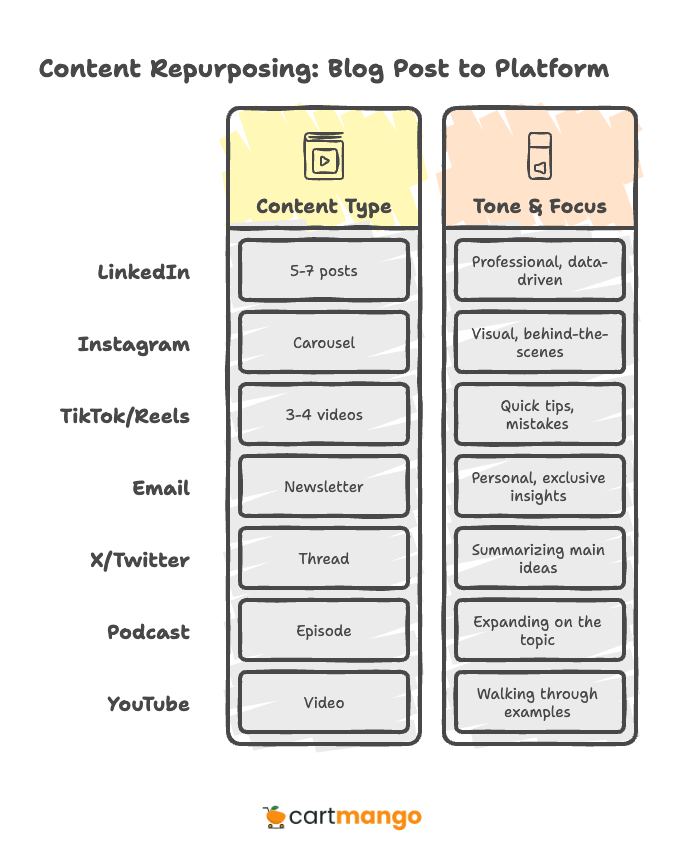
Don’t aim for perfection. Consistent, good-enough content beats sporadic perfectionism every time.
Get Your Content Seen
Publishing without promotion is like throwing a party and forgetting to send invitations. Most coaches are creating content for an audience of zero.
Borrowed Audience
Your blog needs traffic from day one, but organic search takes months to build. Borrow other people’s audiences while you’re growing your own.
Guest Posting Targets: Find blogs that serve your ideal clients but aren’t direct competitors. For sales coaches, this might include entrepreneurship blogs, small business publications, or marketing websites.
Podcast Guesting: Search “[your niche] podcast” and pitch show hosts with specific topic ideas, not generic “I’d love to be on your show” messages.
Joint Ventures: Partner with complementary coaches for webinar swaps, bundle promotions, or co-created content.
Multi-Channel Distribution
Channel | Best Format | Posting Frequency | Key Metric |
|---|---|---|---|
Email Newsletter | Teaser + key insights | Weekly | Open rate + clicks |
Thread or carousel | 3x weekly | Comments + shares | |
Carousel + Reel | 3x weekly | Saves + story replies | |
TikTok | 60-second tutorials | 3x weekly | Views + follows |
Guest Podcasting | 30-45 min interviews | Monthly | New subscriber leads |
Guest Blogging | 1,500-word articles | Monthly | Referral traffic |
Time Investment Reality Check: If the above feels overwhelming, start with email + LinkedIn and add one new channel every 3-6 months.
Monetization: Turn Traffic Into $
Traffic without conversion is just vanity metrics. Your blog exists to grow your coaching business, not to win writing awards.
Revenue Streams
Income Source | Setup Effort | Profit Margin | Essential Tools |
|---|---|---|---|
1:1 Coaching | High | 70-90% | |
Group Programs | Medium-High | 80-95% | Course platform, community tool |
Digital Products | Medium | 85-95% | |
Done-for-You Services | High | 60-80% | Project management, team |
Affiliate Marketing | Low | 20-50% | Affiliate networks, tracking |
Start Simple: Begin with 1:1 coaching packages. Once you’re consistently booking 10+ discovery calls monthly from your blog, layer in group programs or digital products.
The Value Ladder Strategy
Move prospects up increasingly valuable offers:
- Free → Lead magnet (worksheet, mini-course, assessment)
- $47-97 → Digital product (course, template bundle, book)
- $297-497 → Group coaching program
- $1,997-4,997 → High-touch group mastermind
- $5,000+ → Private 1:1 coaching intensive
Each step solves a more complex problem and requires deeper access to you.
Blog-to-Client Conversion Tactics
Content Upgrades: Create downloadable resources related to each post topic. A post about “Sales Call Scripts” gets a companion download with 10 proven templates.
Consultation CTAs: After demonstrating expertise in a post, invite readers to book a strategy call: “Want help implementing this in your business? Book a free 20-minute consultation.”
Email Nurture Sequences: Blog subscribers enter automated sequences that educate while positioning your services as the logical next step.
Social Proof Integration: Include client testimonials and case studies within relevant blog posts, not just on dedicated testimonial pages.
Common Pitfalls
Niche Confusion
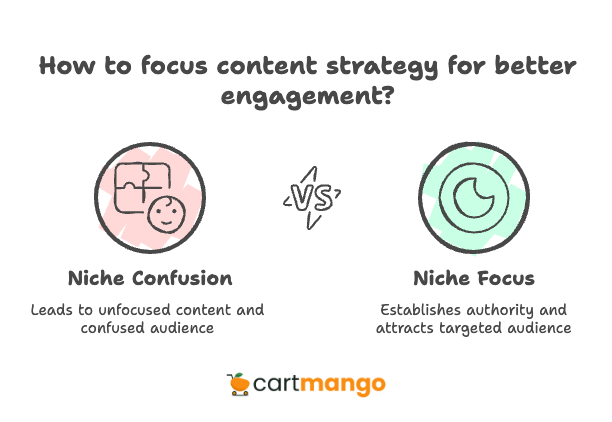
The Problem: Trying to help everyone means you help no one. Posts about mindset one week, business strategy the next, and relationship advice the third confuse both Google and readers.
The Fix: Pick one primary niche and stick to it for at least six months. You can expand later, but establish authority in one area first.
Topic Whiplash
The Problem: Random, unconnected posts that don’t build on each other. Your blog reads like a collection of separate articles, not a cohesive resource.
The Fix: Use the topic clustering strategy outlined earlier. Each post should connect to others through internal links and related themes.
Weak Headlines That Kill Clicks
The Problem: Boring, generic titles that don’t promise specific benefits. “Thoughts on Leadership” gets ignored. “The 5-Minute Daily Practice That Doubled My Team’s Productivity” gets clicked.
The Fix: Use headline testing tools and study what works in your niche. Keep a swipe file of compelling titles.
Internal Link Neglect
The Problem: Treating each post as an island instead of connecting related content. Readers hit dead ends and leave instead of diving deeper.
The Fix: Every post should link to at least 2-3 other relevant posts on your site, plus one service or about page.
CTA Overload
The Problem: Multiple competing calls-to-action in one post. “Subscribe to my newsletter AND download this freebie AND book a call AND follow me on social.”
The Fix: One post, one primary action. You can mention other offers briefly, but focus on getting readers to take one specific next step.
Content Decay
The Problem: Publishing posts and never touching them again. Statistics become outdated, links break, and rankings drop.
The Fix: Schedule quarterly content audits. Update your best-performing posts with fresh data and examples.
Silent Launch Syndrome
The Problem: Publishing posts and assuming people will magically find them. Even great content needs active promotion.
The Fix: Promote every post across multiple channels.
Beyond the Basics
Once you’ve understood the fundamentals of writing blog posts, it’s time to create a system that turns your own blog into a client magnet. The coaches who love blogging most are those who’ve built a consistent stream of high quality content that works across multiple channels.
We’ve talked about this before but it’s worth repeating: your blog content shouldn’t exist in isolation. Every great post you publish content should serve as the foundation for social media marketing across other social media platforms. This approach helps new coaches avoid the trap of creating separate content for each channel, which burns out even the most dedicated practitioners.
Here’s how successful coaches integrate their blogging with broader content marketing:
Personal Stories Integration: Your most engaging blog posts will include personal stories that potential clients can relate to. These authentic moments create the first impression that separates you from other coaches in your niche. When prospects read about your own challenges and breakthroughs, they see you as human rather than perfect.
SEO Foundation: Focus on relevant keywords naturally throughout your content, but remember that ranking on the first page of Google requires patience. Evergreen content performs better long-term than trendy topics, so invest in posts that will attract new clients months or years after publication.
Outsourcing Consideration: As your blog grows, consider hiring a virtual assistant to handle content distribution and basic social media marketing. This frees you to focus on writing while ensuring your great tips reach the maximum audience. Many coaches strongly agree that this delegation step transformed their content marketing from overwhelming to sustainable.
Building Authority
Building authority through blogging requires thinking beyond individual posts. Your long term strategy should position you as the go-to expert in your niche, creating a helpful resource that attracts a consistent stream of sign ups and referrals.
The Authority Mindset Shift: Stop thinking about your blog as separate from your coaching business. Instead, view it as your primary tool for demonstrating expertise to the world. Every piece of informative content you create should showcase your unique approach while providing genuine value.
Content Depth Over Breadth: Rather than chasing every new trend, develop more content around your core expertise areas. This focused approach helps you rank higher for relevant keywords while establishing deeper credibility with your target audience.
Beyond Organic Reach: While organic content remains the foundation, strategic use of paid ads can amplify your best-performing posts. Start small. Promote your most successful content to lookalike audiences of your current email subscribers. This targeted approach typically generates better ROI than generic social media advertising.
Community Building: Encourage other coaches in complementary niches to share and comment on your content. This cross-pollination introduces you to new audiences while building relationships that often lead to referral partnerships. The coaches who strongly agree with this collaborative approach typically see faster growth than those who view blogging as a solo endeavor.
Continuous Innovation: Stay open to new ideas for content formats and distribution methods. The digital landscape evolves constantly, and coaches who adapt their content marketing strategies maintain their competitive edge. Whether it’s experimenting with new social media platforms or testing different content types, flexibility keeps your blog fresh and engaging.
Long-term Vision: Remember that building authority through content marketing is a marathon, not a sprint. The coaches who succeed view their blog as a long term strategy for business growth, not a quick fix for immediate client acquisition. This perspective shift often determines who continues publishing content consistently versus who abandons their blog after a few months.
Your blog becomes most powerful when integrated into a comprehensive content marketing system that spans multiple social media platforms while maintaining focus on your core expertise. This holistic approach creates the consistent stream of qualified potential clients every coach desires.
Blogging for Coaches: Your Turn
Reading about blogging won’t grow your coaching business. Implementation will.
Month 1: Foundation
Week 1-2:
- Choose your niche using the table in section 2
- Set up basic WordPress blog with simple theme
- Install essential plugins (Yoast SEO, Google Analytics)
Week 3-4:
- Create content calendar for next 60 days (focus on 1 post every 2 weeks)
- Write your first pillar post (don’t publish yet)
- Research keywords for next 3-4 posts
Focus: Get the technical foundation right before creating content.
Month 2: Content Creation
Week 1-2:
- Publish your first pillar post
- Promote on existing social channels and email to current contacts
- Start writing second post
Week 3-4:
- Publish second post
- Begin basic social media promotion routine
- Write third post
Priority: Establish consistent publishing rhythm and basic promotion habits.
Month 3: Optimization & Content Growth
Week 1-2:
- Publish third and fourth posts
- Optimize all posts for internal linking
- Research guest posting opportunities
Week 3-4:
- Set up Google Search Console
- Apply to 2-3 guest posting opportunities
- Create social media templates for consistent promotion
Goal: Build content foundation and start earning backlinks through guest posts.
Month 4: Traffic Analysis & Email System Setup
Week 1-2:
- Review Google Analytics data to identify which posts are getting traction
- Only now create lead magnet for your best-performing post
- Set up basic email capture on high-traffic posts
Week 3-4:
- Only if getting subscribers create simple 3-email welcome sequence
- Plan client case study post (with written permission)
- Set quarterly content planning schedule
Your blog won’t transform your business overnight, but consistency over 6-12 months creates remarkable results. The coaches who succeed are those who show up every week, regardless of whether they feel inspired.
Related
- Sellfy vs Payhip: The Recurring Revenue Prison (2026)
- Podia vs Gumroad: The Recurring Revenue Handcuffs (2026)
- SendOwl vs Gumroad: The Recurring Revenue Black Hole (2026)
- Gumroad vs Sellfy: The Vendor Lock-in Cage (2025)
- Gumroad vs Payhip: The Hidden Trap for Creators (2025)
- ThriveCart vs SamCart – The Subscription Hostage Trap (2025)
- 8 ThriveCart Alternatives & The Lifetime Pricing Paradox (2025)
- 8 SamCart alternatives + Subscription hostage (2025)
- The GENTLE Method: Soft marketing for creators
- How Far in Advance Should You Promote a Webinar?
